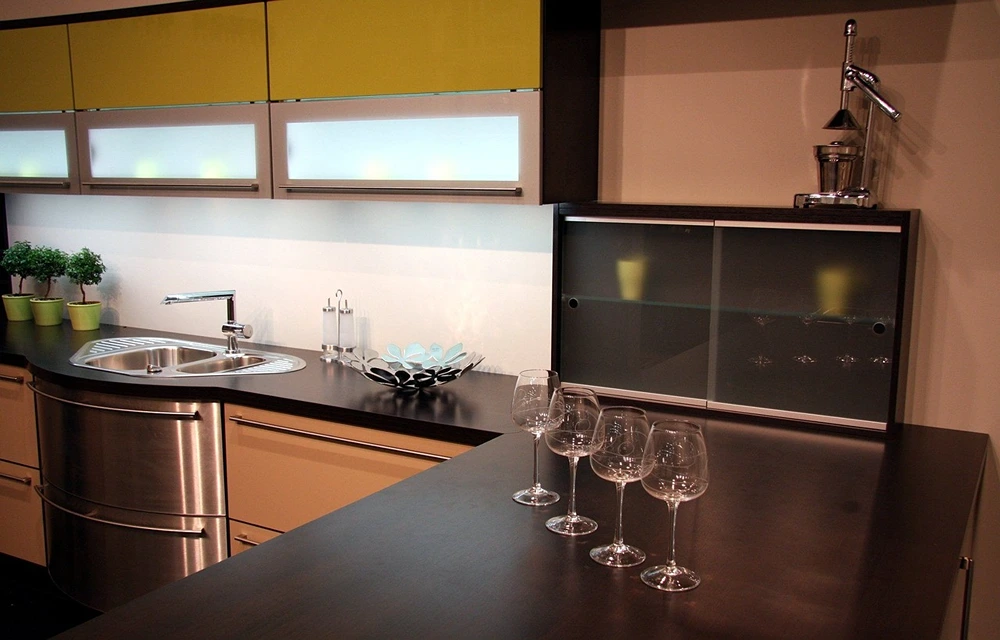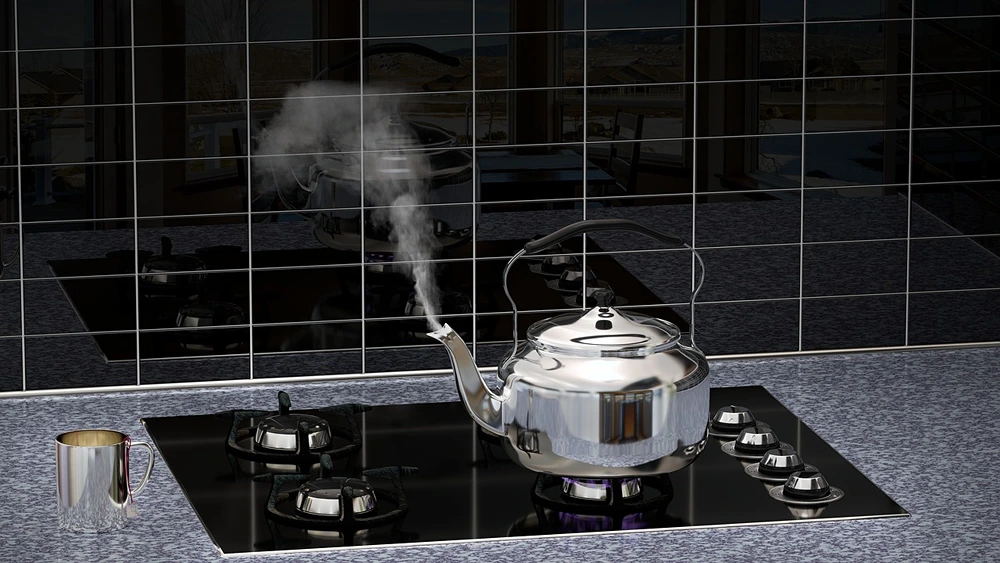The concept of a smart kitchen is rapidly transforming how we approach cooking and kitchen management. With the integration of technology, the kitchen is no longer just a place for preparing meals; it’s a hub of innovation and convenience. For beginners, navigating this new world of smart kitchen appliances and design can be both exciting and overwhelming. This article aims to demystify the smart kitchen, offering a comprehensive guide for those looking to embrace this modern approach to cooking and kitchen design.
Key Takeaways
- Smart Kitchens: A blend of technology and traditional cooking spaces.
- Planning: Essential for integrating technology effectively.
- Appliances: The heart of a smart kitchen, offering convenience and efficiency.
- Design Trends: Technology is shaping the aesthetics and functionality of modern kitchens.
Understanding Smart Kitchens: A Beginner’s Guide

The journey into smart kitchens begins with understanding what they are and their significance in today’s homes. A smart kitchen incorporates various technological elements, from automated appliances to digital assistants, to enhance the cooking experience.
Why Opt for a Smart Kitchen?
- Efficiency: Smart appliances streamline cooking processes.
- Convenience: Technology simplifies tasks like measuring and timing.
- Innovation: New gadgets bring exciting features to everyday cooking.
Designing Your Smart Kitchen: First Steps
When planning a smart kitchen, it’s crucial to consider both the layout and the technology that will best suit your needs.
Planning Your Layout
- Space Utilization: Maximizing kitchen space for both tech and traditional elements.
- Tech Integration: Seamlessly incorporating gadgets without cluttering.
Choosing Technology
- Needs Assessment: Identifying which technologies will be most beneficial.
- Budgeting: Balancing desires with financial constraints.

Essential Smart Kitchen Appliances
At the heart of every smart kitchen are the appliances. These range from basic smart gadgets to sophisticated cooking systems.
Must-Have Smart Appliances
- Smart Ovens: Automate cooking times and temperatures.
- Smart Refrigerators: Keep track of groceries and expiration dates. For a deeper dive into their capabilities, check out the latest features of smart fridges. These appliances not only help you manage your food inventory but also come with advanced features like touchscreens, voice control, and even recipe suggestions based on the contents of your fridge.
- Smart Faucets: Offer hands-free operation and precise measurements.
Benefits of Smart Appliances
- Time-Saving: Automate routine tasks.
- Energy Efficiency: Reduce power consumption.
- Enhanced Cooking: Improve culinary skills with smart guidance.
Smart Kitchen Design Trends
The integration of technology in kitchens is not just about functionality; it’s also influencing design aesthetics.
Current Trends in Smart Kitchen Designs
- Minimalism: Sleek, uncluttered spaces with integrated tech.
- Personalization: Customizable lighting and appliance settings.
- Connectivity: Appliances that communicate with each other for a seamless experience.
How Technology Shapes Kitchen Aesthetics
- Integrated Displays: Screens that blend into the kitchen design.
- Smart Lighting: Adjustable for mood and task lighting.
- Voice Control: Reducing the need for physical controls and buttons.
As technology evolves, so do the features available in smart kitchens. These innovations are not just about fancy gadgets but about genuinely enhancing the cooking and kitchen management experience.
Advanced Technologies in Modern Kitchens
- AI-Powered Appliances: Learn and adapt to your cooking habits.
- Interactive Surfaces: Countertops that can display recipes and videos.
- Robotics: Automated systems for tasks like cleaning and cooking.
Enhancing Cooking and Kitchen Management
- Recipe Suggestions: Based on ingredients available in your fridge.
- Remote Monitoring: Control appliances from your smartphone.
- Voice-Activated Controls: Hands-free operation of appliances.
Smart Kitchen User Experience
The user experience in a smart kitchen is centered around ease of use and efficiency. The integration of technology should not complicate the cooking process but rather make it more intuitive and enjoyable.

Interaction with Smart Kitchen Technology
- Voice Commands: Operate appliances hands-free.
- App Integration: Control settings and monitor progress via smartphone apps.
- Customizable Settings: Personalize appliance functions to suit individual preferences.
User-Friendly Design Aspects
- Ergonomics: Placement of appliances for ease of use.
- Interface Design: Simple, intuitive controls on appliances and apps.
- Feedback Systems: Alerts and notifications for cooking progress and appliance maintenance.
Cost and Installation of Smart Kitchen Systems
Investing in a smart kitchen involves understanding the costs and the installation process. It’s essential to balance the desire for advanced features with budget constraints.
Budgeting for a Smart Kitchen
- Initial Investment: Higher upfront cost for smart appliances.
- Long-Term Savings: Energy-efficient appliances can reduce utility bills.
Installation Process and Considerations
- Professional Installation: Recommended for complex systems.
- DIY Options: Some smart devices are user-friendly and can be installed without professional help.
- Compatibility Checks: Ensuring new devices integrate seamlessly with existing systems.
Maintaining Your Smart Kitchen
Maintaining a smart kitchen requires regular updates and checks to ensure that all the technological components function correctly. For comprehensive tips, consider reading more about smart kitchen maintenance. These tips can help you keep your appliances running smoothly, extend their lifespan, and ensure that your kitchen remains a hub of efficiency and convenience.

Tips for Upkeep and Troubleshooting
- Regular Software Updates: Keep appliances updated for optimal performance.
- Cleaning and Care: Proper maintenance of smart appliances for longevity.
- Technical Support: Utilize customer support for troubleshooting complex issues.
Long-Term Maintenance Strategies
- Warranty and Service Plans: Consider extended warranties for expensive appliances.
- Regular Inspections: Schedule periodic checks to prevent malfunctions.
- Staying Informed: Keep up with the latest updates and recalls for smart kitchen appliances.
Frequently Asked Questions
Smart kitchens streamline cooking processes with automated features, provide recipe suggestions, and offer remote monitoring and control, saving time and effort.
Yes, many smart kitchen appliances are designed to be energy-efficient, potentially reducing utility bills over time.
The difficulty varies. Some appliances are plug-and-play, while others may require professional installation, especially if they need to integrate with existing home systems.
It depends on the appliances and their compatibility with smart home platforms. Some systems allow centralized control, while others may require separate apps.
Security varies by manufacturer, but most reputable brands offer robust security features. Regular software updates are crucial for maintaining security.
Related Posts
Future Kitchen Technologies: Revolutionizing Home Cooking and Design
The kitchen, often considered the heart…
Tech-Advanced Kitchen Design: The Future of Culinary Spaces
The kitchen, traditionally the heart of…





